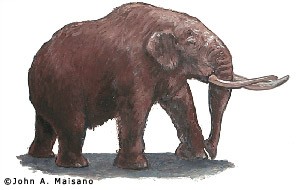


However, elephant taxonomy may further diversify in the future, as genetic and phylogenic research indicates additional subspecies. There are four recognized subspecies of Asian elephants, the Sri Lankan subspecies (Elephas maximus maximus) the mainland subspecies (Elephas maximus indicus), the Borneo subspecies (Elephas maximus borneensis), and the Sumatran subspecies (Elephas maximus sumatranus). Refer to the Physical Characteristics section for in-depth differentiation between the two subspecies. In fact, it is the largest land animal in the world. The savanna elephant is larger than the forest subspecies.Forest elephants (Loxodonta africana cyclotis) inhabit forested regions of central and western Africa. The savanna elephant (Loxodonta africana africana) resides on the savanna and grassy plains of east and South Africa. African elephants inhabit the sub-Saharan regions of Africa.Forest and savanna elephants are differentiated by geographic distribution and several physical characteristics. Preliminary genetic studies have indicated there are at least two subspecies of African elephants, namely the savanna (Loxodonta africana africana) and forest (Loxodonta africana cyclotis) elephants. However, genetic research has provided new insight to elephant "relatedness" and taxonomic classification at the subspecies level.Īfrican elephant classification is ongoing research. Historically, elephants were classified into two species, the African (Loxodonta africana) and Asian (Elephas maximus) elephants. African and Asian elephants are the only surviving members of the Order Proboscidea.


 0 kommentar(er)
0 kommentar(er)
